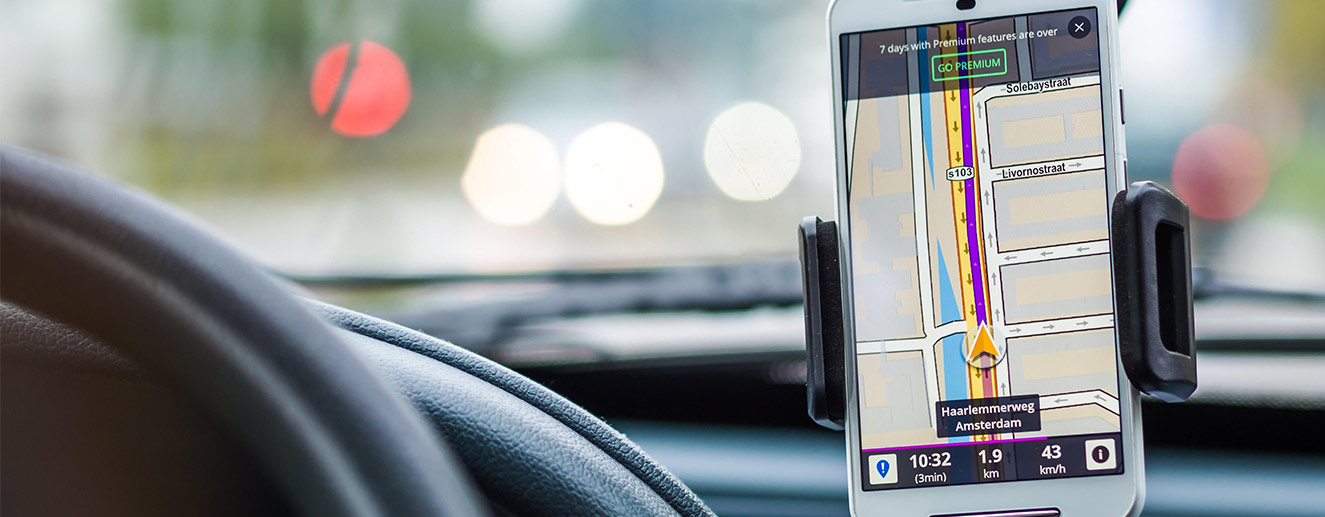Route optimization is a term that has become synonymous with fleet management. With customer expectations rising every day (especially with the onset Covid-19 pandemic), and drivers getting more jobs to complete within tight deadlines, route optimization has never been more important. Businesses can save up to 20% in mileage, and boost order capacity by a whopping 100%, without increasing fleet capacity, if they have the correct route optimization tools.
In this article, we learn about the following aspects of route optimization:
- What is Route Optimization?
- Benefits of Route Optimization
- Role of a driver in Route Optimization
- Why is Route Optimization critical for delivery businesses?
- How Route Optimization solves the last-mile delivery problem and reduces costs
- What is a Route Optimization Software?
- How does Route Optimization Software work?
- How does Route Optimization Software improve efficiency (and save money)?
- How do you know if you need Routing Software?
- What are the core Routing Optimization Strategies?
- How to choose Routing Techniques?
- Route optimization constraints and factors to consider while choosing RO software for logistics businesses
- ROI of Route Optimization Software
- Metrics to measure Route Optimization Success
- How to choose the best route optimization software for your business
- How to analyze Route Optimization results?
- Impact of Route Optimization in the e-commerce sector
- Impact of Route Optimization in different business sectors
- Routing Optimization FAQs
What is Route Optimization?
Simply put, route optimization is a process that determines the most cost-efficient route(s) between two destinations. The following factors have to be considered:
- Location and number of all important stops on the route.
- Turns and intersections along the route.
- Nearest and most capable driver to be assigned to the route.
- Traffic reports for particular times during the day.
- The time frame for deliveries.
- A convenient approach to a certain stop on the route.
What are the benefits of Route Optimization?
With competition increasing in every sector, the supply chain industry requires advanced technology to automate logistics from end to end to save time and effort, boost efficiencies, and reduce human dependency. A robust route optimization software helps to streamline delivery and on-ground operations such as shipment, transportation, last-mile delivery, and reverse logistics. It uses complex algorithms and Artificial Intelligence (AI) to map out the shortest and most efficient route to all stops and destinations.
Here’s how Route Optimization Software can benefit your business:
#1 Reduce expenditures
As mentioned, the process of route optimization identifies the most cost-effective routes. Did you know optimized routes can save fuel costs by up to 30%? Route optimization effectively reduces time spent by vehicles on the road, which also brings maintenance costs down. This means your vehicles wear out slowly, so premiums and replacement expenses are lower too.
#2 Save time
Since the software takes care of every aspect, fleet managers don’t have to spend several man-hours buried in files searching for crucial data and then analyzing it to make critical decisions.
#3 Boost customer experience
Customers are no longer patient about delays or failed deliveries. You can lose their business to your competition if they feel dissatisfied with your service. To ensure that deliveries aren’t delayed, the optimization software has to scan traffic conditions all the time, in order to suggest the best route. If a vehicle suddenly breaks down, GPS tracking is used to identify the closest drivers. Then the task is allotted to the new driver, while routes are re-optimized to ensure there is no delay. When your on-time arrival rate increases, more customers become loyal to your brand. The software also ensures that additional jobs can be completed per day, without putting extra stress on drivers.
#4 Better safety
Route optimization comes with a feature to avoid left turns, right turns, and U-turns. When your driver chooses a destination, the software automatically plans a route without or with minimum turns. The lesser the number of tricky and complex turns, the lower are the chances of accidents and delays. Studies also show that 22% of accidents are weather-related. To combat this issue, the software inputs the weather forecast of the region for the particular route date, when planning a new route.
#5 Improvement in driver morale and productivity
When driving conditions are in their favor, drivers feel more confident on the road. When optimizing routes, the software also factors in breaks and lunches, so they have sufficient time to rest and recharge. Happy drivers are likely to put in their best at all times, which means more success for your business.
But there is a catch here as well. If drivers take longer breaks than required or are unable to manage their time properly, it can lead to revenue leakage. But route optimization can help managers monitor the actions of drivers. Real-time tracking and transmitting of information assists in taking timely and necessary decisions.
When driving conditions are in their favor, drivers feel more confident on the road. When optimizing routes, the software also factors in breaks and lunches, so they have sufficient time to rest and recharge. Happy drivers are likely to put in their best at all times, which means more success for your business.
Role of a driver in Route Optimization
Remember, if your drivers are unable to execute an efficient delivery route plan, your efforts go to waste. It is necessary to make an effective driver debrief a part of the overall route optimization process. It involves a rapid post-route discussion to understand if the routes went as planned and if not, to delve into the reasons for that.
It is imperative that live data from your in-cab telematics is integrated with the route optimization software. Debriefs that involve such data are based on actual performance. The driver won’t be able to hide that he took a different route, although you need to find out why. Without telematics data, you have to depend on the driver to record events manually such as when the route started and ended length of time for each drop, and any difficulties encountered along the way. It is extremely unreliable.
Why is Route Optimization critical for delivery businesses?
When a delivery business is small scale, it can work with the aid of Google Maps, while Excel can be used to maintain data. It doesn’t take much time to plan routes for drivers every day. They complete jobs on time, customers give good feedback, and everyone is happy! But what happens when businesses start doing well, your order volume increases, and route planning becomes more complex? More jobs and drivers to be handled, with customer expectations rising at the same time!
Tools like Google Maps won’t be able to manage routes. If you try to do everything yourself, it risks inflating your operational costs, often in the form of too many vehicles in your fleet, and/or wasted fuel and wages due to longer than necessary routes. Route optimization software helps to reduce wages, time spent on the road, fuel consumption, etc. by figuring out the most efficient route for the whole fleet in just a few minutes.
How does Route Optimization solve the last-mile delivery problem and reduce its cost?
Last-mile delivery is the end-point in the supply chain. Though the concept seems straightforward as it just involves successful delivery of the package to the customer, it includes a whole lot of variables and complexities. It is the point where the customer and your business (brand) interact in person. Customer experience is a top priority for businesses in the supply chain, and route optimization helps to improve this last mile experience.
There are several ways that route optimization software can help slash last-mile delivery costs:
- Clubbing orders by taking into account preferred delivery time slots, priority orders, location preference, and order specifications.
- By giving best-fitting fleet-mix recommendations after factoring in business and ground restrictions like traffic, weather, etc.
- Obtaining Electronic Proof of Delivery for reducing problems with customers and better digitization of last-mile delivery processes.
- Geocoding and accurate address detection for automated sorting processes.
- Generating predictable and achievable time windows of delivery for customers, thus improving first attempt rates and customer experience.
- Smart and easy-to-use mobile application for logistics managers to keep tabs on operations, send predictive alerts on delays, vehicle breakdowns, idle time, live tracking, etc.
- Decreased turnaround time for the customer by optimizing “first-mile” operations, sharing locations of warehouses and distribution centers in real-time, and so on.
What is a Route Optimization Software?
Route optimization software is used to improve the driver’s efficiency and customer service. It creates efficient routes for the whole fleet based on the business’s requirements, constraints, and goals, assisting managers by automating the task of manually planning the sequence of stops. It also helps manage daily operations and offers innovative strategies to run a fleet.
How does Route Optimization Software work?
A route optimization software is crucial for lowering operational costs and increasing revenue, not to mention saving loads of time and effort. It works based on the following parameters:
- Visualization
It is vital to see exactly where every stop is, which driver is going to serve it, and how any updates will impact the overall route. The software should understand routes quickly and be able to make changes on the fly.
- Using algorithms
Optimized routes are created by sophisticated algorithms that consider constraints such as time windows, driving speed, vehicle load capacities, precise ETAs, and so on. A proper algorithm can be tweaked as per your business requirements to create customized routes, which saves 20% to 40% on fuel and drive time.
- Tracking via apps
Optimized routes are dispatched to an app that directs drivers where to go, collects proof of delivery, and mentions special instructions for a stop. No more printing route manifests or giving stacks of paper to the driver!
- Tracking in real-time
Monitoring drivers every step of the way is important. If one of them gets delayed, you can immediately find out how this affects the ETA of their upcoming stops. You can allocate the job to another driver, re-adjust the route, and update customers as well. It helps with customer service and improves the accountability of drivers.
- Reports and analytics
The software lets you track delivery operations over time and let you identify key areas of improvement, so you can reduce expenses and grow the bottom line.
How does Route Optimization Software improve efficiency (and save money)?
- Visualize routes clearly
Investing efforts in deciphering a route is a clear no-no when time is of the essence. Physical and paper maps or text-only directions are simply no good. Route optimization software translates delivery routes into a visual map. It allows dispatchers and drivers to see where stops are, who is going where, updates based on real-time traffic conditions, etc. at a glance.
- Reduce delivery time
As mentioned, algorithms can be used to create optimized delivery routes. It helps to cut down on drive time as well, so drivers can get to stops faster and complete more deliveries in a day.
- Real-time updates to customers
Customers want to know where their package is and how long the driver will take to arrive at their doorstep. Route optimization software lets you keep tabs on drivers at all times. In case one of your drivers gets delayed for whatever reason, it is visible in real-time to both the company and the recipient. The amount of delayed time will be added to the original estimated delivery time, keeping it accurate. You won’t have to deal with support calls from anxious and angry customers asking about status updates.
- Improve overall performance
When it comes to delivery operations, they need to be tracked consistently, so you can make improvements and maintain optimum efficiency. By tracking KPIs (via built-in reporting capabilities) such as on-time rates, successful deliveries, service times, customer feedback rating, idle time, and drop-offs per pickup, you can check the areas to be improved to decrease costs and boost profits.
How do you know if you need Routing Software?
Are you still depending on basic tools and strategies to plan delivery routes? It is time to take a step back and re-evaluate your process as there are high chances they are less efficient than they should be. The following indications mean you need routing software ASAP:
- Transportation costs are shooting up, while revenue isn’t increasing at the same rate.
- You have to deal with unhappy customers regularly, for failing to meet delivery promises.
- It is tough to extract information regarding the efficiency and performance of your delivery operations.
- Drivers are dissatisfied with your company – you are getting regular complaints and many are leaving.
- You are forced to offer later order cut-off times due to customers and sales prospects.
- The dispatch team isn’t following the plan and changing driver assignments on their own.
What are the core Routing Optimization Strategies?
Route optimization is much more than just identifying the “best routes”. It needs to consider real-time traffic, historical data, road construction, and recent accidents. There are three kinds of routing strategies used for optimization:
- Static
This method works well for fleets that deliver to the same locations on a recurring timeline. The planning is based on geographic areas on an annual or semi-annual basis. Drivers follow the same routes each day with the same volume and number of stops. Though the technique lacked flexibility in the past, GPS tracking has made it possible to adapt to different routes as required.
- Dynamic
Even though these routes are established daily, they can implement forecasted and historical traffic patterns too. Dynamic routing lets you make changes all the way up to truck loading and along the route as well. Since you aren’t locked onto a pre-determined route, you can discover a better route that takes less time on the day of the delivery.
- Real-Time Dynamic
This method also allows adapting to sudden changes. But companies that implement this strategy usually focuses on consecutive daily orders. As new orders arrive, they are added to the route in a logistical order that decreases run-around time and speeds up delivery.
How to choose Routing Techniques?
Since every fleet has its own requirements, the optimization techniques implemented by them will differ as well. However, a few common factors to keep in mind include operation size, service areas, delivery dispatch, scheduling (changing or consistent), and type of company. Once you take these aspects into account, you can choose which routing strategy best fits your business.
Route optimization constraints and factors to consider while choosing software RO for logistics businesses
- Traffic considerations
Real-time traffic not only saves logistics costs but also guarantees timely delivery and better adherence to Service Level Agreements (SLAs) for improving customer satisfaction. Look for software that computes ETA and routes based on dynamic, real-time data.
- Geocoding
Figuring out ambiguous addresses and comprehending local contexts is what geocoding is all about.
- Historical data
Riders, customers, and time of day should be considered while examining historical data. For riders, it tells you about their skills, expertise, preferred time of deliveries, and preferred region to work. When it comes to customers, it indicates preferred time slots, availability, and any special instructions. On the other hand, time of day gives you insights about prevailing traffic conditions of a region and working/closing hours of a particular building.
- Order-vehicle issues
At times, two different types of products, such as electronics and perishables can’t be shipped together. Even pharmaceuticals have to be supplied in special vehicles. The software should consider these order-vehicle constraints.
- Dynamic route planning
The software should be able to optimally handle on-demand orders along with scheduled orders. Rerouting on the go, due to orders or preferences of customers changing while the rider is out to deliver, is another feature that businesses prefer these days.
- Seamless transition
The software needs to incorporate preferences from the on-ground team to phase out the traditional system rather than trying to change the entire procedure in a single go.
- Reports and analytics
The operations should be manageable across a single dashboard in real-time. It should allow you to track the actual routes vs. the planned routes and help compare the performances of your various business hubs.
With Anstel’s advanced route optimization software, you can identify the fastest, efficient, and most cost-effective for drivers, while keeping tabs on their location and progress. Your can manage operations seamlessly as the software drastically reduces route planning and scheduling efforts.
ROI of Route Optimization Software
It is tough to pinpoint an exact “ROI” as such, but it is typically realized within the year. The ROI calculation differs depending on whether it is installed as software with an upfront cost or a software as a service (SaaS) solution with an ongoing monthly payment. ROI on a route planning software mainly comes from these areas:
- Better use of drivers by planning routes that make more efficient use of each shift.
- Usage of fewer vehicles, which means cutting down on maintenance costs.
- Reducing the number of miles driven, thus decreasing fuel expenses.
What metrics can you use to measure Route Optimization Success?
There is no particular formula that directly measures the success of route optimization programs. But you can choose metrics to understand if your route optimization techniques have been successful or not. The first step should be to select metrics that are most important to your business and establish an accurate baseline. Concentrate on fleet operating metrics that are crucial to your business and ensure you measure them correctly. Some examples are:
- Total fleet miles
- Drops per shift
- Planned vs. actual stops
- Total fleet operating costs
- Fuel expenses
- Costs per mile
- Hours invested for planning routes
- Third-party costs (if any)
- On-time arrival time
- Inbound call volumes
- Fleet capacity utilization.
How to select the best Route Optimization Software?
You can’t just select any random route optimization software. It should fit your business model while helping to reduce delivery costs and minimize delays. Remember these pointers:
Mapping updates
Failed and delayed deliveries can mean huge losses for your business in terms of both revenue and credibility. One of the major reasons for such problems is following wrong directions to reach a specific delivery location. The route optimization software should provide real-time and updated mapping data to minimize the effort of updating delivery info, and help complete jobs within deadlines.
Geofencing
Just like wrong directions, incorrect addresses lead to delays too. It not only hampers productivity and profitability but also leads to poor customer experience. Geofencing helps to convert address data into precise geographic coordinates that can be calculated, mapped, and analyzed. If there is a change in road networks or human error, the location data can help to overcome them.
Multi-route planning
As a rule, businesses need to be prepared to manage multiple vehicles in a fleet with various deliveries, pick-ups, and service calls. That is why fleet managers have to plan the most feasible and shortest possible routes for timely deliveries. The software should provide several optimized routes for the driver to choose the one that takes the least amount of time. It must also be convenient to reroute previously planned routes and reallocate more stops to a different vehicle.
With on-demand delivery orders coming in, last-minute changes are inevitable. These changes should be quickly incorporated so delivery routes are modified automatically. This is where dynamic route planning plays an integral role – it returns optimal routes based on real-time constraints. It facilitates intelligent planning of on-demand orders and scheduled orders while working out new routes for drivers if customer preferences change. This technique helps both drivers and fleet managers to adapt to changing delivery schedules without compromising on efficiency.
Import and export of data
With humongous amounts of customer data being generated daily, it needs to be recorded for future use. A route optimization software is an ideal tool to import and export specific addresses.
Performance analytics and reporting
Analyzing delivery operations is as important as managing them in real-time. The software should provide a centralized dashboard that displays detailed analytics of actual and optimized routes. It helps fleet managers stay updated with customer preferences and make smart, timely decisions.
How to analyze Route Optimization results?
You know that you have done something right when your business is impacted in the following ways:
- More sales and service revenue.
- Improvement in operational efficiency.
- Better productivity in sales & service executive and delivery partners.
- Reduction in sorting and dispatch planning time.
- Lowering of operational costs.
- End-to-end omnichannel fulfillment.
- Increase in On-time in-full (OTIF) deliveries.
What is the impact of Route Optimization in the e-commerce sector?
Route planning software offers a plethora of benefits for the e-commerce sector such as:
- Optimized delivery routes and automatic allocation to drivers after considering historical data and implementing dynamic planning.
- Geocoding and locality detection to automate shipment sorting processes inside delivery centers.
- Balancing the number of deliveries per driver to accommodate breaks in the schedule.
- Improved vehicle utilization capacity.
- End-to-end visibility of all vehicles, riders, and other on-ground resources across a centralized dashboard.
- Setting achievable delivery windows that result in a lesser number of failed deliveries, better SLA adherence, and enhanced customer delight.
What is the impact of Route Optimization in different business sectors?
Apart from e-commerce, route optimization software is of extreme importance in other industries as well. Take a look:
Food Delivery
Optimal routing is essential for a food delivery business as it cuts down operational costs and creates a more satisfied customer base. The software helps in these ways:
- Order tracking and alerts in real-time.
- Distribution of last-minute orders or sick drivers’ shifts evenly across the fleet via dynamic routing.
- Setting individual capacities and truck capabilities at the truck/driver level.
- Optimizing routes for large order volumes quickly.
Installation, Inspection, and Maintenance
Any on-site service business depends heavily upon driving. The software aids in:
- Setting time windows at the order level.
- Adjusting to cancellations and last-minute requests via dynamic re-planning.
- Reducing the number of technicians on call thanks to automatic workload balancing.
- Adjusting for required breaks, locations, and client time windows via advanced weekly planning.
Logistics
When shipping cargo over long distances, selecting the right route can make all the difference! Take a look at how:
- Offering better control of basic fleet management with features like GPS tracking and creating routes consider vehicle type by importing orders.
- Automatically distributing workloads across the fleet.
- Providing efficient weekly and long-haul planning, including overnight stops and scheduled breaks, (as per compliance to regulations).
Retail
When you supply a product to your business partners, the timely delivery of the product is a huge part of the customer experience. Here it addresses:
- Real-time order tracking and alerts to keep customers updated about delivery status.
- Efficiently deliver to multiple distribution centers with order-based route planning.
Healthcare
When it comes to healthcare scheduling, arriving on time is of the utmost importance. The software helps to:
- Maintain accurate arrival times.
- Send ETA notifications automatically by SMS or email.
- Match appointments with the right medical professional by setting certifications and experience.
- Map out the shortest possible routes from one patient location to another.
Route Optimization FAQ
Can Google Maps optimize my route?
To put it in a nutshell – NO! Navigation apps like Google Maps can be used for planning a simple route and getting turn-by-turn directions from one point to another. But if there are several points involved, with multiple stops, Google Maps can’t “optimize” the best and most cost-efficient route. It is a route planner for multiple stops, but not a route optimizer.
How to optimize your routes on your own?
There are a couple of ways to optimize routes on your own – take a look:
Manual Optimization
You enter all addresses on a map and plan the route by putting different stops in order that makes sense to you. Needless to say, this is a very time-consuming and tedious method, which loses effectiveness if you have to do it daily. Moreover, there are too many variables like traffic, weather, etc. that you can’t keep track of.
GPS Apps
Apps like Google Maps or Waze can be used to create routes. But as mentioned above, these aren’t effective for “optimizing” routes. They can find a route from point A to B, but you can’t add more than a certain number of stops, nor will the route be cost-effective.
What is Route Scheduling?
Route scheduling is the practice of scheduling a driver’s servicing, delivery, and arrival times for their routes. Route scheduling not only maximizes service appointments in a given workday but also ensures that customers get serviced in an accurate and timely manner.
What is Route Management?
Route management includes route optimization software as part of the overall solution – it is the practice of achieving the best efficiencies from fleet operations. It involves the theory of optimizing route efficiencies and combines that with real-time fleet tracking and turn-by-turn driver directions. It ensures that fleet vehicles are actually using those routes to cut down on distance traveled, fuel usage, or amount of time required to complete jobs. Route management also includes monitoring of driver behavior and vehicle activity to ensure safe and eco-friendly driving practices.
What is the difference between Route Planning and Route Optimization?
Route planning
It is also referred to as route mapping or route sequencing. It is the process of importing a list of orders and putting the relevant destinations into an order that seems to make sense. Route planning software takes the point of origin and works out a path that touches each of the multiple stops in whatever order is the shortest.
Route optimization
Route optimization doesn’t plan delivery routes based on just distance. It puts you in better control of your operations by factoring in vehicle weight limits, drive time, shift patterns, road conditions, delivery preferences, and more. The process lets you change routes on the fly. With route planning, a last-minute request from a customer or vehicle breakdown means you have to start from scratch. But route optimization reassigns the job to the closest and most capable driver and changes their routes immediately to accommodate this last-minute change.
How to map multiple stops using routing and scheduling software?
Route planning and optimization software solutions that include multiple stops involve more than just directing shipments from one stop to another. It allows fleet managers to add multiple stops on the route and cover several delivery locations in the vicinity (as many as possible in one go). The data of all locations the driver has to cover in a day is entered into the software, which generates an efficient dispatch and delivery plan with multiple stops between points A and B for faster and more planned deliveries, making the task easier for drivers.
Parting Thoughts
Route optimization software helps fleet managers figure out the most cost-efficient routes for drivers, in a jiffy! It also equips them with tools to respond to any alterations and update previously planned routes in real-time as situations throughout the day. When routes are optimized, it means drivers spend less time on the road, so fuel costs go down, while the number of stops can be increased, which improves revenue.

 Global
Global Australia
Australia India
India





Pingback: Connected Fleet in Logistics: A Brief Guide | Anstel Global